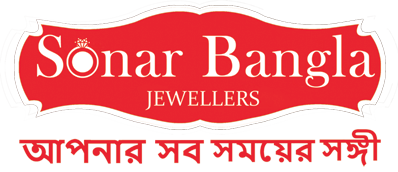
Gold is a major element of Indian culture. It is utilised for investing, weddings and other celebrations. Fixing a fair gold prices for jewellery and other products is largely determined by the jewellers in India. They take into account a number of variables like daily gold rates, purity levels, and production fees.
In this blog, we’ll look at the many approaches jewellers in India use to figure out the gold rates for their products, as well as the difficulties and chances they encounter in a very cut throat industry. Gaining insight into the intricate world of gold pricing and the Indian jewellery market can be accomplished by comprehending how Indian jewellers set their gold product prices.
Factors That Influence Gold Prices in India
Gold rates in India are influenced by a number of domestic and international factors. Understanding these variables can help explain why gold prices fluctuate and how jewellery makers set prices for their products. Among the important factors are:
Global gold prices
Global gold prices have a significant impact on gold rates in India. Fluctuations in the international market can cause Indian prices to rise or fall, although there may be a delay before Indian prices reflect global trends.
Import duties and taxes imposed by the Indian government
In order to maintain economic stability and close the current account deficit, the Indian government levies taxes and charges on imported gold. India’s taxes and tariffs can have a big impact on gold rates, and they can alter depending on the tax or duty rates.
Currency exchange rates
The price of gold in India is directly impacted by the rupee’s value in relation to the US dollar. Because it costs more to import gold. Gold rates may increase if the rupee declines against the dollar. On the other hand, if the rupee appreciates against the dollar, gold rates may decrease. Due to this, it is critical for jewellers to closely monitor currency rates and modify their pricing as necessary.
Demand and supply dynamics
The demand and supply dynamics of the Indian gold market play a crucial role in determining gold rates. High demand for gold can lead to higher prices, while changes in supply, such as fluctuations in gold mining output or reduced gold imports, can also have an impact on prices.
Inflation and interest rates
In times of high inflation, gold is often viewed as a hedge against inflation, which can lead to higher demand and higher prices. Similarly, changes in interest rates can affect the opportunity cost of holding gold, which can also impact prices.
Geopolitical events
Geopolitical events can also have an impact on gold rates in India. Wars or political instability in other countries can cause investors to seek safe-haven assets like gold, leading to higher demand and higher prices. Similarly, global events such as economic sanctions or trade disputes can also lead to increased uncertainty and higher demand for gold.
Gold hoarding and speculation
High levels of hoarding or speculation can lead to increased demand and higher prices, while lower levels can lead to lower prices.
Consumer preferences and cultural trends
Consumer preferences and cultural trends can also affect gold rates in India. For example, changes in fashion trends or shifts in consumer preferences towards other types of jewellery can lead to lower demand for gold and lower prices. Similarly, cultural events such as weddings or festivals can lead to increased demand for gold and higher prices.
Technological developments
Last but not the least, Technological developments in the jewellery market in India, such as the rise of online shopping and e-commerce, can also impact gold prices in India. Online platforms can provide greater access to information about gold prices and increase competition among jewellers, leading to lower prices. Additionally, technological advancements in jewellery-making can affect the quality and design of gold jewellery, which can also influence prices.
Methods Used by Jewellers in India to Determine Gold Prices for Their Products
Jewellers use various methods to determine gold rates for their products. This section covers daily gold rates, making charges, gold purity, and customer negotiations.
Daily gold rates
One of the primary methods used by jewellers to determine gold prices for their products is the daily gold rates provided by official agencies such as the India Bullion and Jewellers Association (IBJA) or the Multi Commodity Exchange (MCX). These agencies release daily gold rates based on global market trends, which jewellers use as a baseline to determine their own gold prices.
Role of making charges
Making charges are the fees charged by jewellers for the labour involved in crafting the gold jewellery. These charges vary depending on factors such as the design complexity and time taken to create the jewellery piece. Making charges are typically a percentage of the gold rate and can range from 10% to 35%. They can significantly impact the final price of the gold jewellery, often accounting for a substantial portion of the total price. Therefore, making charges play a crucial role in determining gold rates in India.
Gold purity
Jewellers in India adjust prices of their products based on the purity of gold used, measured in karats. Higher karat gold is more expensive, leading to a corresponding increase in prices.
Customer negotiations
Jewellery makers frequently negotiate the final price of gold products with customers based on various factors such as the amount of gold used, the complexity of the design, and market demand. Customers may also bargain for discounts or other perks, which can affect the final price of the product.
Here you can see how the complexity of necklace designs affects the rates
Gold Rate Calculation in India
Jewellery manufacturers in India use the following formula to calculate gold rates:
Price of gold per gram (22 carat or 18 carat) X (Weight in grams) + making charges/gram + Goods and Services Tax (GST) on (Price of jewellery + making charges) = Final price of the jewellery
Conclusion
In conclusion, determining gold prices in India is a complex process that involves various factors such as global prices, import duties, currency exchange rates, demand and supply dynamics, inflation, and consumer preferences. Indian jewellers use a combination of daily gold rates, making charges, gold purity, and customer negotiations to arrive at the final price of their products. Gold continues to hold great cultural and economic significance in India, and the jewellery industry must navigate the challenges and opportunities presented by these various factors.
